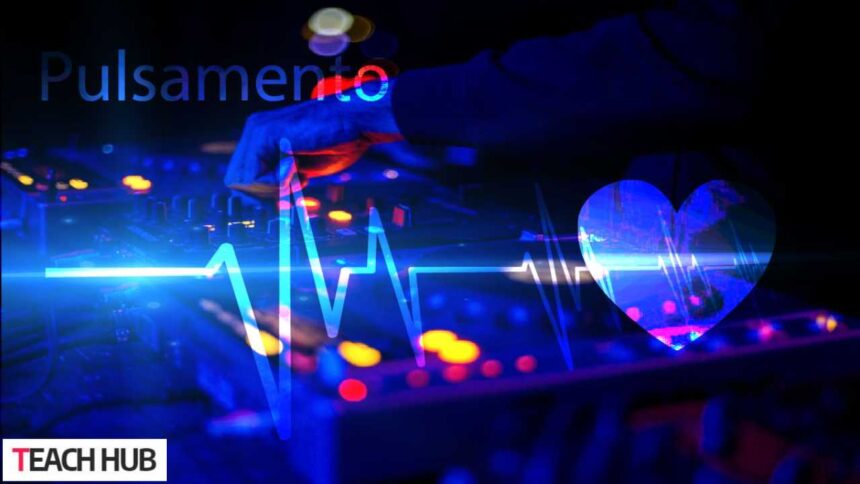In our fast-paced world, it’s easy to lose track of the subtle rhythms that guide our days. Pulsamento is the heartbeat of these rhythms, a concept that captures the essence of human expression. It’s the pulse behind everything from art and music to language and culture. Discover the power of pulsamento and how it shapes your world.
Uncover the hidden language of pulsamento and unlock a deeper understanding of yourself and the world around you. From its ancient origins to its modern applications, pulsamento offers a unique perspective on human experience. Are you ready to explore the fascinating world of pulsamento? Dive into this comprehensive guide and discover how this powerful concept can enrich your life.
What is Pulsamento?
Pulsamento, derived from the Latin word “pulsare” meaning “to beat” or “to pulse,” is a term that encompasses the rhythmic essence inherent in human experiences and expressions. It represents the underlying pulse or beat that organizes patterns and provides structure across various disciplines, including music, art, literature, and even philosophy.
Historical Origins of Pulsamento
The concept of pulsamento can be traced back to ancient civilizations, where the rhythmic pulse of music, dance, and spiritual practices held profound significance. In ancient Greece, the concept of rhythms (rhythm) was closely intertwined with the idea of a fundamental, underlying pulse that governed the structure and flow of various artistic and philosophical traditions. Thinkers like Pythagoras and Plato recognized the intrinsic connection between the rhythmic patterns of the universe and the human experience.
Similarly, in ancient Indian philosophy, the notion of nada (the primal sound) and its pulsating, generative qualities were central to practices like yoga and Vedic chanting. The rhythmic cycles of the cosmos, as represented in the cyclical nature of time and the pulse of the heart, were seen as expressions of the fundamental creative force that underpins existence.
Theoretical Foundations of Pulsamento
From a theoretical perspective, pulsamento can be understood as the underlying rhythmic pattern that structures and propels various forms of human expression and experience. In music, the concepts of meter and tempo are directly related to the notion of pulsamento, as they define the rhythmic framework within which melodies, harmonies, and rhythms are organized.
In the field of psychology, the concept of entrainment – the tendency of biological or cognitive processes to synchronize with external rhythmic stimuli – is closely linked to the idea of pulsamento. The human body, with its physiological rhythms such as the heartbeat, breathing, and brain waves, can entrain and be influenced by the rhythmic patterns present in the environment.
Furthermore, in the realm of philosophy and phenomenology, thinkers have explored the role of pulsamento in shaping our lived experience and perception of the world. Philosophers like Henri Bergson and Gilles Deleuze have discussed the notion of duration and the continuous, pulsating flow of consciousness, which they see as fundamental to our understanding of reality.
Contemporary Applications of Pulsamento
The concept of pulsamento has found resonance in various contemporary artistic and cultural practices, as well as in emerging fields of study.
Music and Sound Art
In the world of music, pulsamento is a critical element in genres ranging from electronic dance music to avant-garde experimental compositions. Producers and composers often utilize the manipulation of rhythmic patterns, tempos, and pulses to create immersive sonic experiences that engage the listener’s body and mind.
Similarly, in the realm of sound art, artists have explored the creative and conceptual potential of pulsamento, using it as a means of challenging conventional notions of music and sound. Installations, performances, and sound sculptures may incorporate rhythmic elements that invite the audience to engage with the underlying pulse of the work.
Visual Arts and Performance
The rhythmic quality of pulsamento has also been found to be expressed in various visual arts and performance practices. Painters, sculptors, and installation artists have incorporated pulsating, rhythmic elements into their works, often to evoke a sense of energy, dynamism, or the flow of time.
In the realm of performance art, choreographers and dancers have long recognized the central role of pulsamento in shaping the experience of movement and the body in space. The synchronization of individual movements with a collective, rhythmic pulse is a hallmark of many dance traditions around the world.
Therapeutic and Contemplative Practices
The awareness and manipulation of pulsamento have also become an integral part of various therapeutic and contemplative practices. In fields like music therapy, dance/movement therapy, and mindfulness-based interventions, the rhythmic qualities of pulsamento are harnessed to promote physical, emotional, and psychological well-being.
Moreover, the connection between pulsamento and the cyclical, pulsating nature of the cosmos has been explored in spiritual and contemplative traditions, where the rhythmic patterns of the universe are seen as manifestations of a deeper, underlying creative force.
Cultural Implications of Pulsamento
The concept of pulsamento has also had significant cultural implications, influencing a wide range of human endeavours and shaping our collective understanding of the world.
Societal Rhythms and Synchronization
The rhythmic patterns inherent in pulsamento have played a crucial role in the organization and synchronization of human societies. From the communal rhythms of agricultural cycles to the synchronization of work schedules in industrial societies, the underlying pulse of pulsamento has been a driving force in the structuring of social life.
Furthermore, the rhythmic patterns present in communal rituals, celebrations, and cultural practices have served to strengthen social bonds, foster a sense of shared identity, and reinforce the collective experience of time and space.
Technological Innovations and the Digital Age
The pervasive influence of pulsamento can also be seen in the technological innovations that have shaped the modern world. The development of various digital technologies, from the metronome to the computer clock, has been driven by the need to capture, measure, and manipulate rhythmic patterns.
In the digital age, the concept of pulsamento has found new expressions in the realms of electronic music, computer-generated art, and the synchronization of various digital systems and devices. The rhythmic pulse of technology has become an integral part of our daily lives, shaping our experiences and perceptions of the world around us.
Philosophical and Scientific Inquiries
The concept of pulsamento has also sparked philosophical and scientific inquiries as thinkers and researchers seek to understand the deeper implications of rhythmic patterns in the human experience and the natural world.
In the fields of physics, biology, and neuroscience, the study of pulsating and oscillating phenomena, from the subatomic level to the cosmic scale, has revealed the fundamental role of rhythmic patterns in the structure and dynamics of the universe. These insights have, in turn, influenced our understanding of the nature of time, the origins of life, and the workings of the human mind.
Conclusion
Pulsamento is a powerful idea that helps us understand the rhythm of life. It’s like a special way of seeing the world, showing us how everything, from nature to art, has a beat. By studying pulsamento, we discover how this rhythm affects our lives, our thoughts, and our creations. It’s a tool that helps us appreciate the beauty and patterns around us. As the world changes, pulsamento stays important. It keeps guiding us to find new meanings, connect with others, and understand the amazing rhythm of life.
(FAQs)
What is pulsamento?
Pulsamento is a concept that encapsulates the rhythmic patterns and subtle cadences that underpin human expression and experience. It reveals the profound significance of these rhythms in our daily lives.
Where does the concept of pulsamento come from?
The origins of pulsamento can be traced back to various cultural and philosophical traditions, ranging from ancient Eastern practices to modern Western theories of embodied cognition and emotional intelligence.
How can pulsamento be applied in our daily lives?
Pulsamento can be applied in a wide range of contexts, from personal well-being and creative expression to professional development and interpersonal relationships. It offers a framework for cultivating mindfulness, enhancing productivity, and fostering deeper connections with ourselves and others.
What are the benefits of exploring pulsamento?
Exploring the concept of pulsamento can unlock a deeper understanding of the rhythmic patterns that shape our lives, leading to increased self-awareness, improved emotional regulation, and a greater sense of purpose and fulfilment.
Who can benefit from learning about pulsamento?
Pulsamento is a universal concept that can benefit individuals from all walks of life, regardless of their age, background, or profession. Whether you’re an artist, a business professional, or simply someone seeking to deepen your connection with the world around you, this guide will provide valuable insights and practical tools to enhance your experience.



